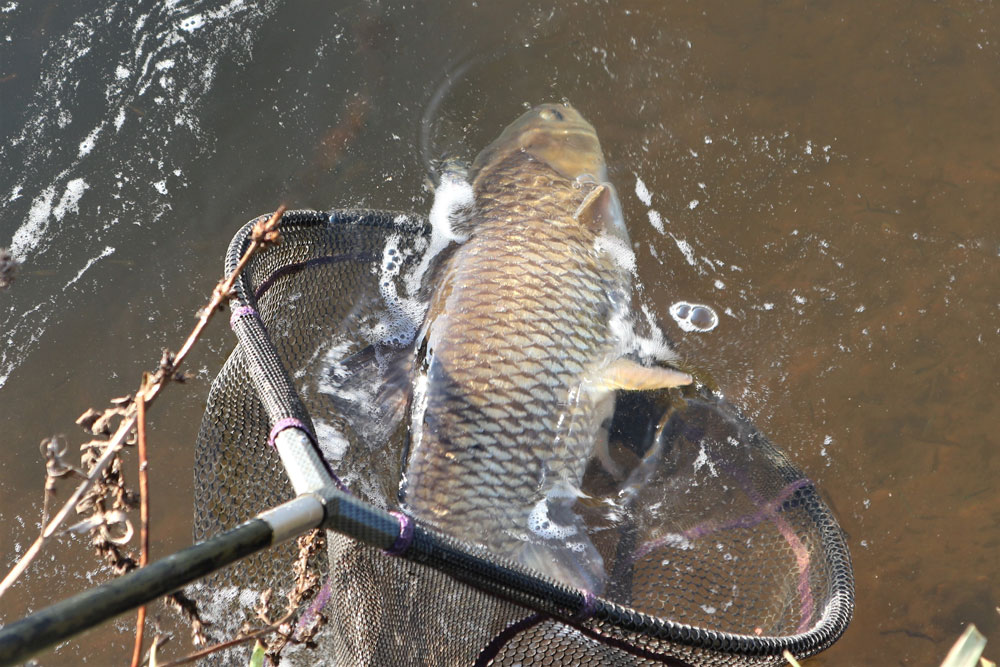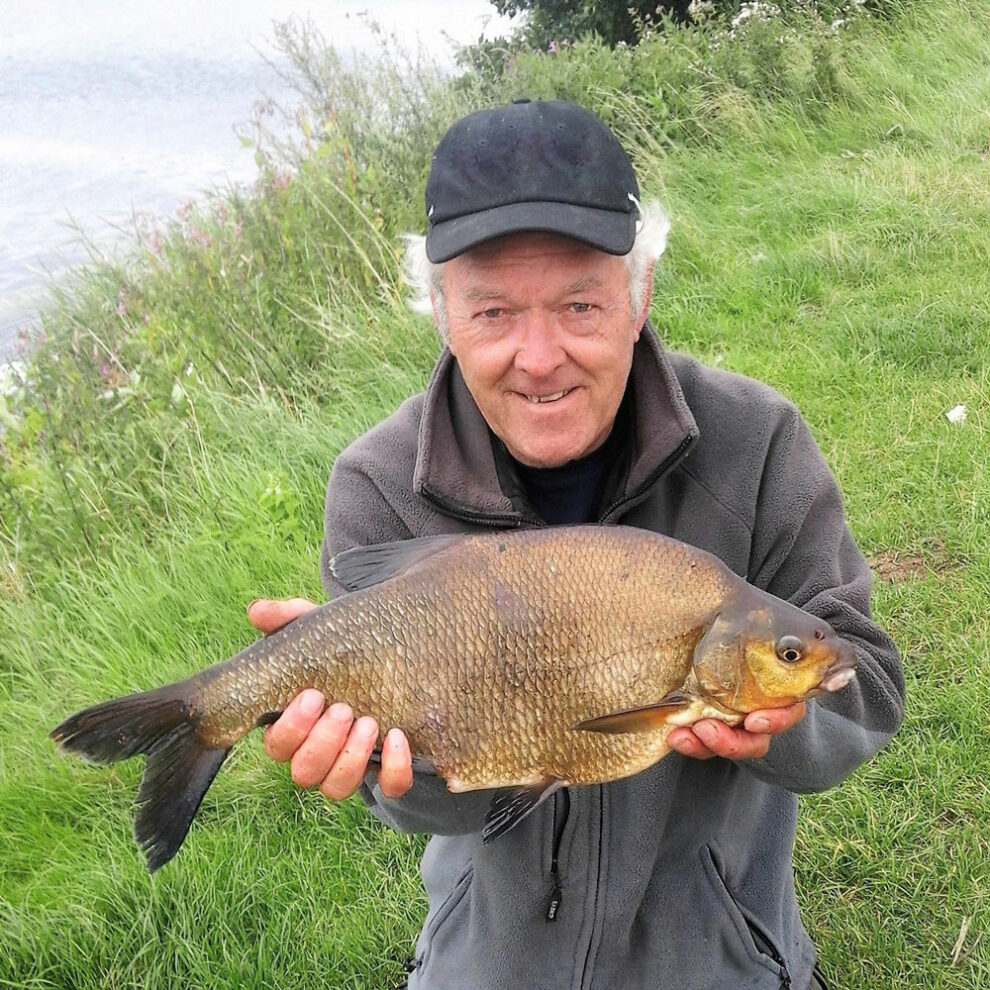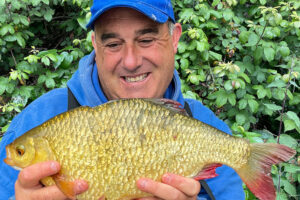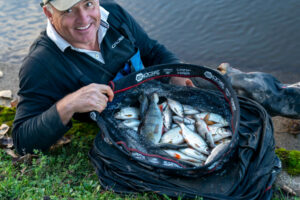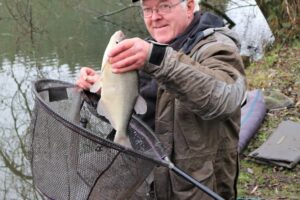Power Swims
Power stations are significant landmarks on major rivers like the Trent. This one at Farndon near Newark offers several noted bream pegs. Living close by in Grantham for several years, I always enjoyed exploring this fabulous river. I first fished the Trent way back in my Essex County days, earning an NFA Division One runner’s up team medal on it. That was when John Dean was king and many anglers used floats as their first line of attack. Old methods like the stick and waggler still work, of course, although you might get some funny looks from the big fish brigade. They are everywhere, using powerful rods pointing skywards, targeting huge barbel. Pellets and boilies now dwarf maggots and casters, although a traditional approach still works for most species. The waterway is teeming with quality silvers again, so methods like the pole have become surprisingly effective.
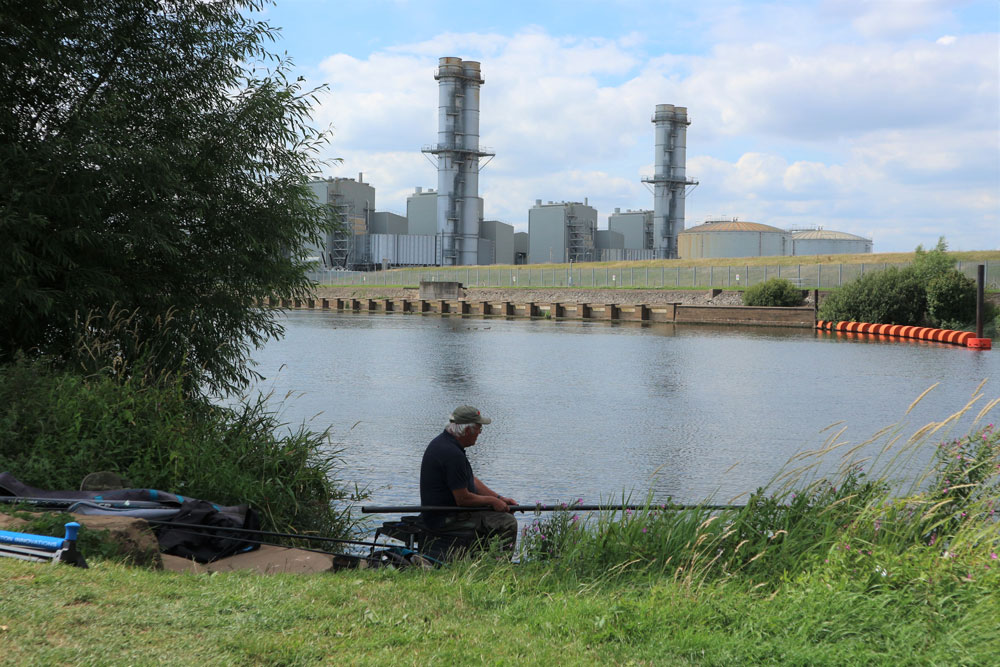
Changing Ways
Feeder fishing is the most popular method on the Trent, where both specimen and match approaches are very effective. Quivertip rods need to be capable of launching weighty feeders a long way, an area where Cadence excels. It’s a big chuck to reach the slacker far side on the Farndon power station wides, where the bigger bream hang out. Getting to know the river again after a break of many years, it was a battle to try to beat the ravenous small fish. Baits like casters, maggots and chopped worm were mauled to bits. You can’t ignore pellets and boilies now, which are regularly fed by anglers targeting the massive barbel, many stretches of the famous river currently hold. Other species, particularly bream, soon get a liking for fishmeal products. I quickly learnt to add some pellets to my groundbait feeder mix, and then proper slabs like this one turned up.
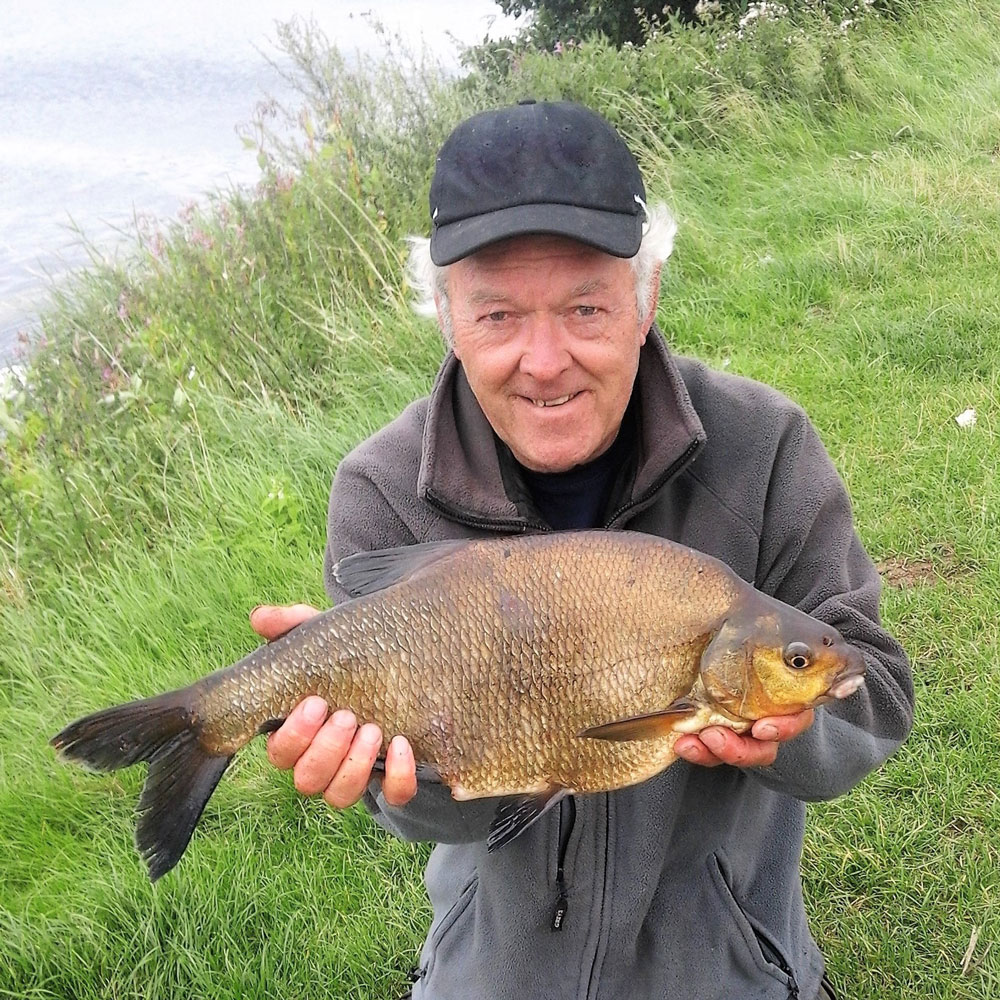
Learning Curve
It didn’t take long to discover the long pole is a viable method on many stretches of the Trent. In this swim at Newark Dyke, downstream of the power station, the river narrows opposite a big weir. Normally, the current pulls through hard here, but after a dry spell there was hardly any flow. I could easily control a 1g pole float, which carried just enough bulk weight to help get through the teaming shoals of bleak, tiny roach and small dace. This Newark and District Piscatorial Federation venue can be fished on a day ticket for just a fiver, which is top value. On this occasion, I decided to feed chop worm and casters in groundbait to begin with, planning to see if I could get hemp and tares working later on in the session. I initially found plenty of dumpy perch and some bonus skimmers, but putting in more groundbait turned out to be a mistake, pulling in hordes of skinny bleak and dace.
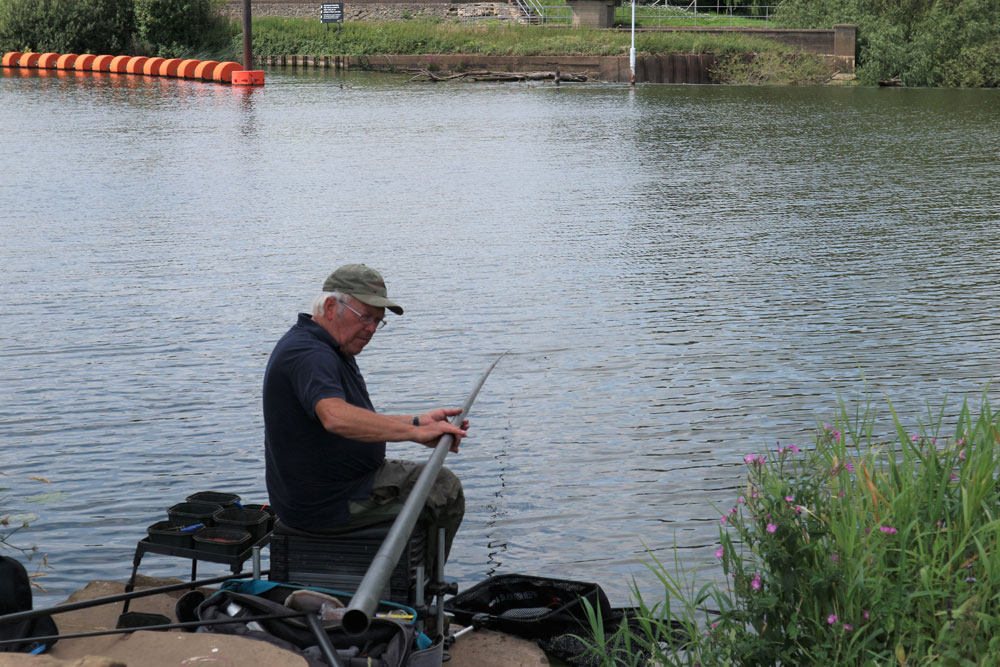
Getting Sorted
Groundbait normally works well on sluggish river stretches, helping to get things moving faster. I generally put in several medium balls of a dark mix at the start, laced with chopped worm, casters, and hemp. By not going too far out, it’s possible to feed accurately by hand, rather than wasting lots of time cupping in. If regular groundbait does the trick, a switch to a long whip is worth considering, to speed things up even more. Topping up with regular small balls of groundbait can keep swims producing, along with loose feeding hemp and casters over the top with a light catapult. But there will be occasions where small fish blitz just about everything you try on the hook. Dumping rigs in to get through tiny fish helps, finding better quality perch like this one, while skimmers might also be lurking deeper down. A heavier pole rig with a bigger bulk is another option.
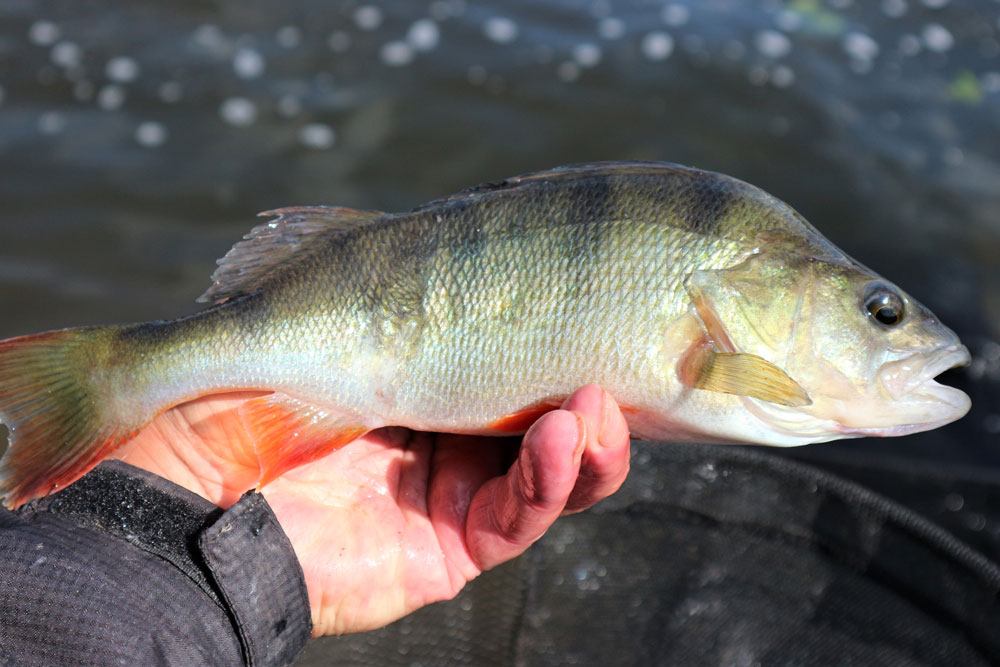
Working it Out
Trying to avoid bleak and fingerling dace, a thick worm segment or a dark caster can get through to bigger samples underneath. Cutting back on groundbait and loose feeding hemp with a few casters every put in is another way to go, trying tares on the hook in the search for better quality. Bites are often tricky to hit with seed baits. A good trick is to ignore any initial indications on the float, until the rig has properly settled and started to run with the flow. Small fish tend to attack baits on the drop, while bigger samples can be further down swims, where they provide more positive bites once you get a hook bait presented among them. In my River Thames days, hemp and tare fishing was an art form, especially for fast takers like dace. It was possible to miss bites all day long if you were too quick, while ignoring erratic first indications quickly changed everything.
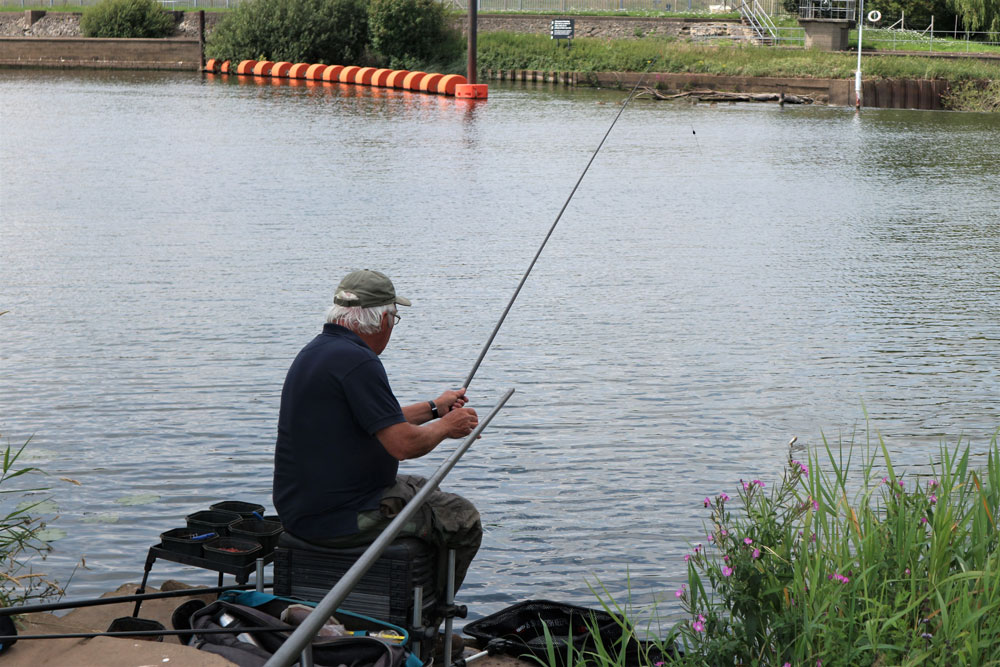
Pole Time
If river fish won’t take seed baits, maggots, or casters will typically produce plenty of bites from dace, perch and quality roach. Enjoying lots of action with my Cadence CP2000 pole is better than sitting staring at a motionless quivertip, which can happen on sluggish venues. The feeder works better when there’s extra flow and some colour in the water, tending to dry up as a method in normal summer levels. Running line float tackle can struggle too when there’s less pace in the water, while the pole offers superior presentation under such conditions. You might have to work at things to achieve a good catch rate, but that’s all part of the enjoyment. Some diehards won’t fish big rivers when they are low and clear, but I relish giving them a go anytime. It’s nice to bring different methods like the pole into play, which helps convert a higher percentage of bites.
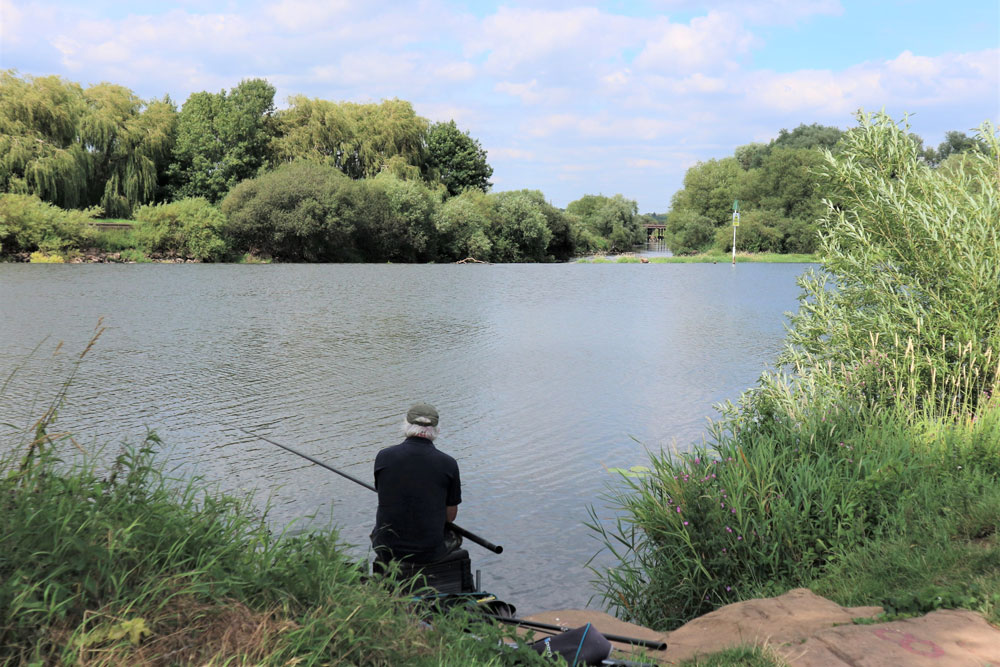
The Whip
Whip fishing is a largely forgotten technique, particularly on rivers, but can be hugely effective. Fishing to hand style, or long lining and adding sections as the rig works its way through the swim, both work well. They are highly effective ways of bagging up with dace, roach, bleak, and perch. Feeding small nuggets of groundbait every cast, or every other put in, brings swims to life quickly. Sometimes fishing to hand is better for speed purposes, although adding pole sections allows the tackle to trot further, often resulting in bonus big fish that hang back in river glides. The Cadence CP200 9m whip is perfect for this type of fishing, being lightweight and easy to handle on flowing water. Rigs can vary from 1 to 4gram, depending on depth and speed of current. I used a long whip on a Trent swim for this catch of chunky silver fish, plus a superb bonus bream.
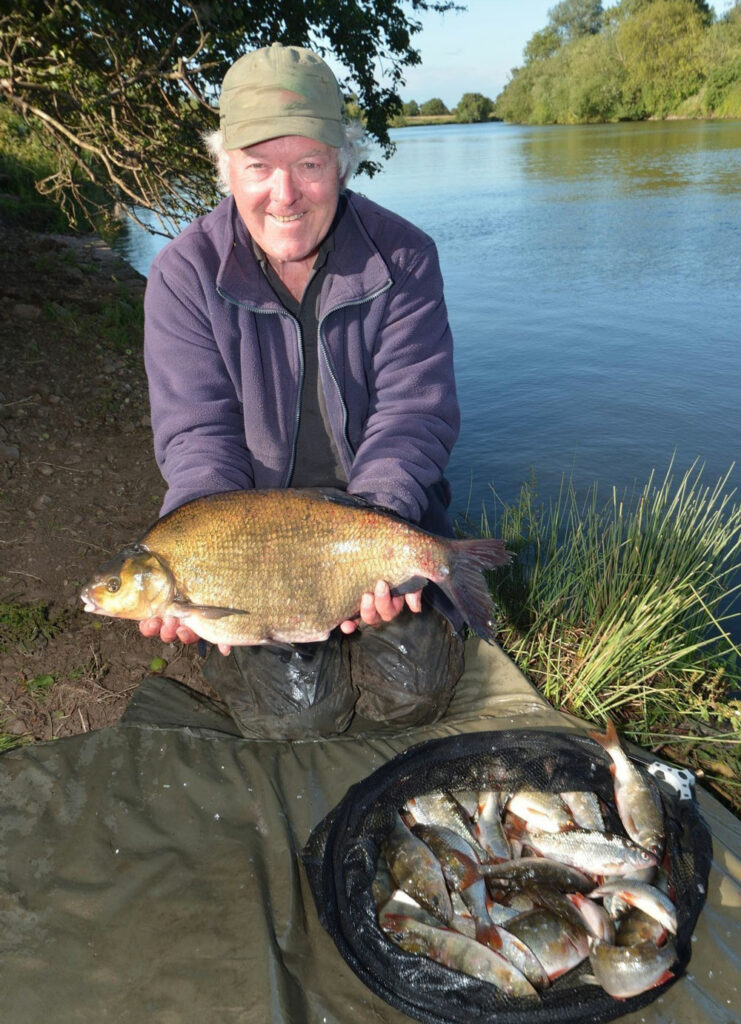
Stick Comeback
One of the most pleasing methods I’ve returned to using on big rivers is the stick float. You hardly see any of these classics in tackle shops any more, but luckily, I still have a good collection. Many anglers make the basic mistake of using bulk shot with stick floats, but if you use one with a well-balanced cane stem, they cast just as well with strung shotting. This provides the big advantage of covering all the water in front of you, pulling bites both on the drop and at full depth. You can always push shot together to form a bulk if small fish are problematic, or if you want to try holding the tackle back with an over-depth setting. I’ve altered many of my favourite stick floats, gluing on translucent hollow plastic tips that make them easier to see at distance. I designed this concept for Angling Direct several years ago and still use their Advanta X5 models regularly too.
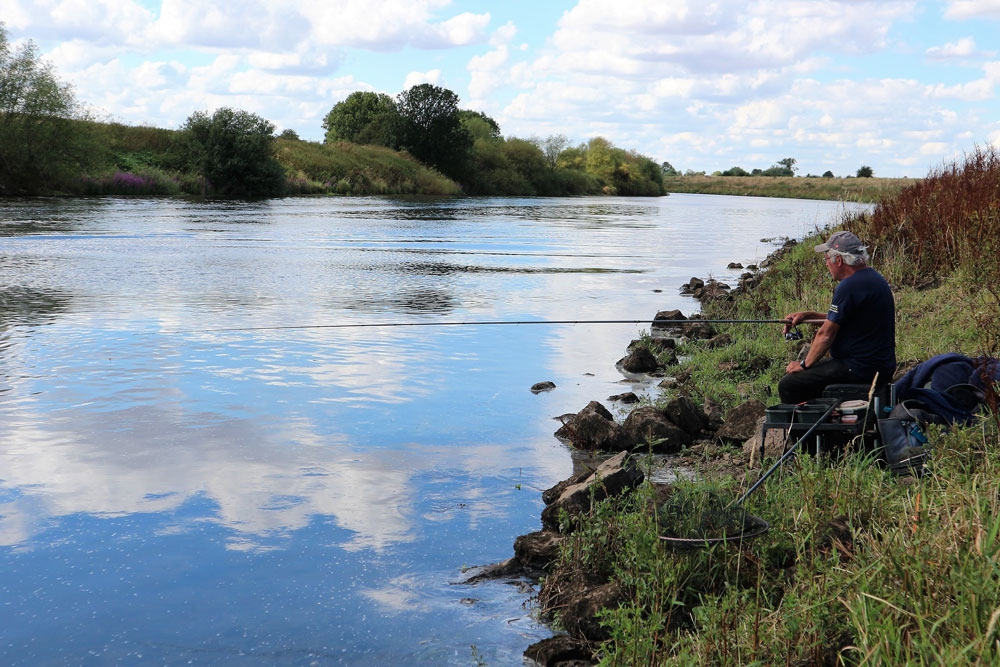
Tide Watching
I wasn’t sure what to expect on my first trip to the tidal Trent at Collingham. My memories of tidal fishing go way back to the River Thames at Richmond and Teddington, where levels fluctuated enormously. I was certainly expecting something more dramatic than the few inches of run off I experienced, which didn’t even require moving or adjusting my seat box. The river still had a fair pace, and it was great running a stick float through. I loose fed hemp and casters every cast, switching between maggots, casters, and tares on the hook. I caught loads of perch, some fair-sized roach and plenty of dace. There are miles of the tidal river to explore, and most stretches are heaving with fish. Bigger weights and larger specimens tend to come to feeder tactics, but it’s simply enjoyable setting up a stick float and putting together a nice mixed net of species like this.
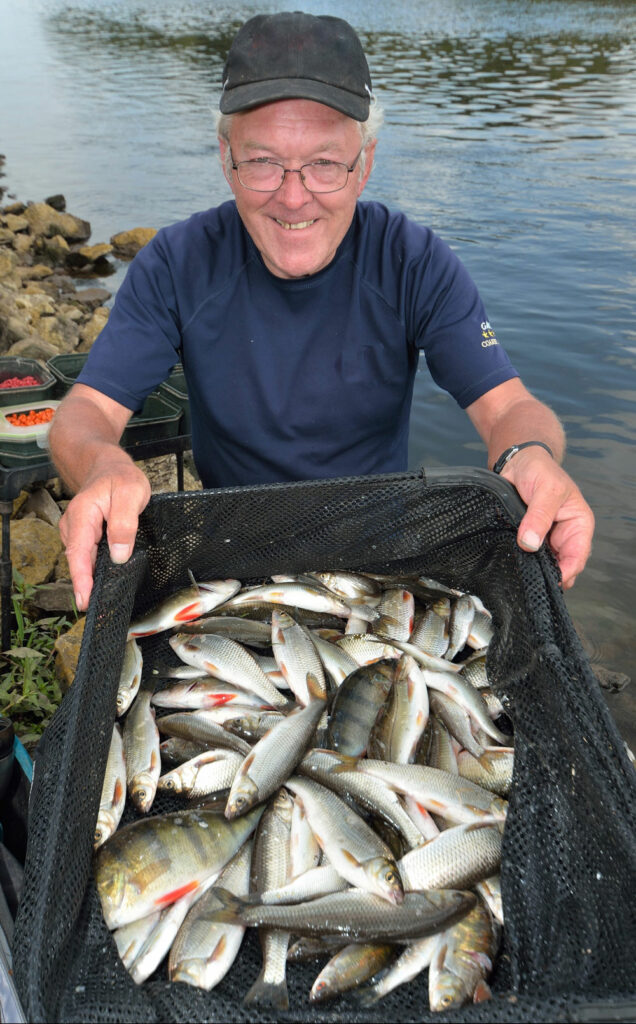
On The Wye
Visiting the River Wye, it was hard to resist setting up a stick float again, a method that kept me so busy on the Trent. It worked fairly well, and I got attached to some proper rod benders, but a big problem with my normal approach was caused by minnows. These tiny blighters quickly infested swims when regular loose feed was going in. Double caster, or a tare on the hook helped to get through them, but only occasionally. I caught loads of lively trout as well, which felt like chub to begin with, but soon gave the game away by acrobatically leaping out of the water. Very few roach showed in the clear water conditions. After working a float swim for several hours, I also tried switching to bomb tackle in the hope of finding a bonus barbel, but that trick failed. Occasionally, you have to concede your favourite ways are not quite right for strange new venues.
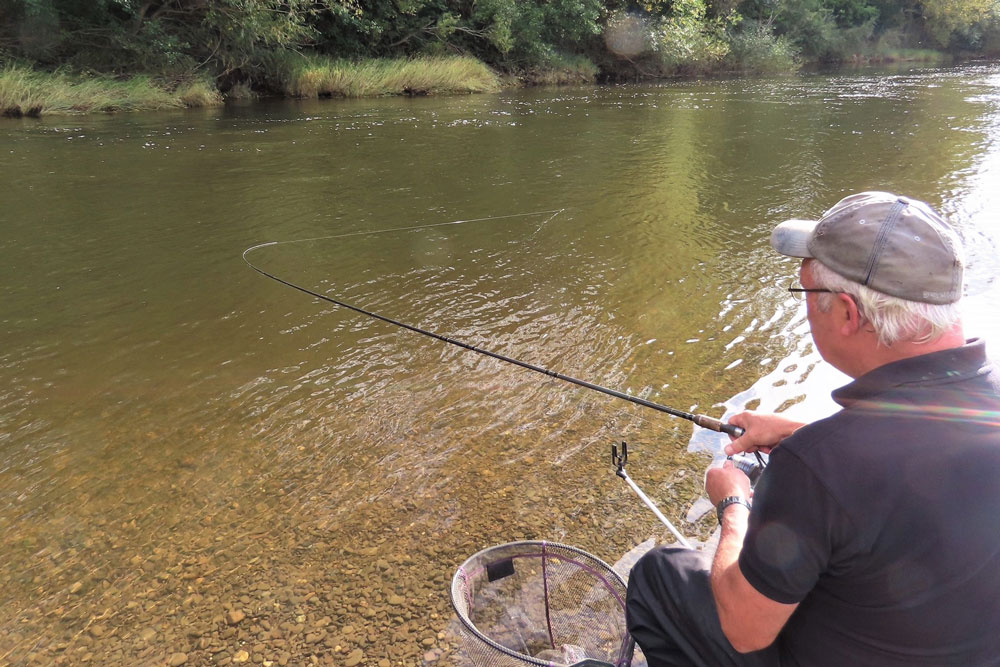
Changing Tack
Although my stick float tackle worked in spasms on the Wye, a lot of time was wasted trying to get through the small stuff and numerous trout. Bleak and small dace bashing gets boring outside of matches, while waiting and hoping for quality fish to move in. There comes a time when an inevitable switch to feeder tackle is required. On this occasion, I was wary of using a groundbait design because the water was clear and teeming with nuisance fish. Instead, I took a route some diehard river anglers might think a bit oddball, bringing a pellet feeder into play. I crammed it with a mixture of meaty flavoured 2mm and 4mm pellets and banded a 6mm hard offering a few inches away. It only took a couple of casts before my 12ft quivertip rod nearly flew off its rest. A big and angry chub resulted, and suddenly a completely different world was uncovered.
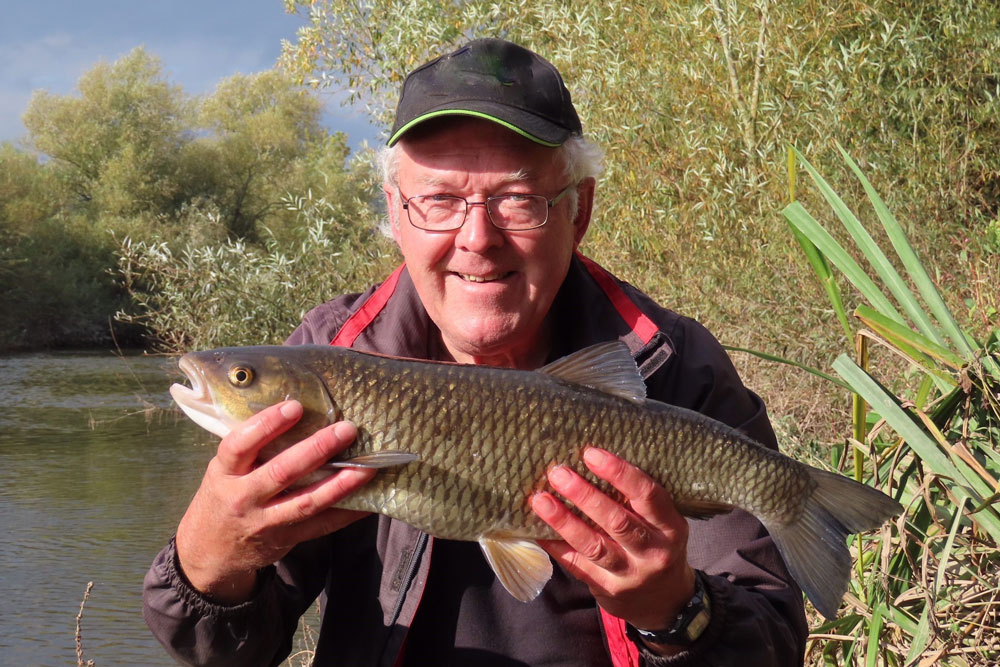
In The Flow
It never ceases to amaze me when trying to crack big river venues, how a slight tweak, or simple change of tactics can make such a big difference. I could quite happily have run a float through my River Wye swim all day long, in the hope of eventually getting past the hordes of tiny dace, bleak, and minnows. I might have found a few better fish, but switching to a pellet feeder quickly resulted in a dynamic shortcut to success. The small stuff was still out there, but only causing a constant trembling on my quivertip. These indications were easy to ignore because once something big enough to inhale a banded 6mm hard pellet turned up, the whole rod thumped round violently. I had the feeder free running, but that didn’t matter because the fish were almost hooking themselves. They wanted pellets nailed hard on the deck; it was as simple as that.
